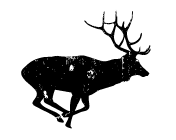750,000
Est. Whitetail Population
456,000
No. Licenses Sold Annually
$34
Archery and firearms tags are $34.
Resident hunting license and deer permit
$185
Archery and firearms tags are $185.
Non-resident hunting license and deer permit
202"
Taken by John A. Breen in Beltrami County in 1918 and ranks No. 12 overall.
Record B&C Typical Stat
806
Total B&C Typical Entries
277 3/8"
Picked up by Jesse J. Schroeder in Goodhue County in 2023. It ranks No. 25 overall.
Record B&C Non-Typical Stat
524
Record B&C Non-Typical Entries

Check out the latest info for Minnesota. Image by Jeremy Raines
Season Dates (2023):
Archery season runs Sept. 16 to Dec. 31. Rifle season is Nov. 4 to Nov. 12 or 19, unit depending. For some areas, a second season runs Nov. 18 through 26. Muzzleloader season is Nov. 25 to Dec. 10. Check the MINNESOTA DNR WEBSITE to confirm season dates.
The Grade: B
From the plains of southwestern Minnesota to the big woods in northern counties, this state offers plenty of diversity. Terrain varies greatly from one region to the next. Too bad we can’t grade it better than a B. This place was much better decades ago, and by our analysis, the quality of hunting remains steady, though. Epizootic hemorrhagic disease, chronic wasting disease, harsh winters and predation have a history here. But deer numbers have bounced back some.
“We are a unique state with multiple different biomes (prairie grasslands, tallgrass aspen parklands, coniferous forests, and deciduous forests) that present very different hunting styles and challenges, different predator bases from north to south, and very different deer numbers or densities,” said Todd Froberg, big-game program coordinator with the Minnesota Division of Fish and Wildlife. “There are opportunities to hunt metro areas; rural farm areas; the long, stretching transition zone (coniferous to deciduous to prairie habitat); the driftless region in southeastern Minnesota, which presents some of the best whitetail habitat in the nation; prairie and farmland regions in the southwestern part; big woods hunts in the northern part of the state, with ample public lands; or complete wilderness-style hunts in the Boundary Water Canoe Area Wilderness.”
In light of CWD, major changes have been enacted the past few seasons, especially in north-central and southeastern counties. Carcass movement restrictions, increased bag limits, mandatory surveillance, and other new policies have followed. Sources recently confirmed that hunters should also expect additional changes after the discovery of CWD in free-ranging deer in Dakota County, as well as in captive facilities elsewhere.
Drought is also affecting the state. “As most Minnesotans know, much of the state is in a moderate to severe drought condition this year, even coming off the snowy winter,” Froberg said. “If this drought continues, it will be even more crucial or a benefit to hunters compared to other years to identify available food sources or water. Hunters should key in on those spots or find travel corridors to those areas and will likely find success.”
On the bright side, young hunters now enjoy a statewide four-day youth season in October. Previously, it was confined to northwestern and southeastern areas.
Antler Nation Knowledge:
Generally, the best deer hunting is in eastern and central counties. Anoka, Dakota, Dodge, Fillmore, Hennepin, Houston, Morrison, Olmsted, Otter Tail, St. Louis, Washington, and Winona are great destinations for top-end deer and good deer densities. However, southern Minnesota is plagued with CWD, so if you’d rather avoid that, western and northern counties might be better. In terms of big deer, the northwestern counties hold their own.
Minnesota is mostly private land, but open HUNTING ACCESS IS PLENTIFUL in the North Star State. Wildlife management areas, state forests, scientific and natural areas, forest legacy conservation areas, and walk-in access provide excellent opportunities. Federal ground also has solid access, such as certain national forests and national wildlife refuges. Although that isn’t unique to Minnesota, the state is known for an abundance of county land that’s tax-forfeited, as well as industrial forest land. These parcels are often open to hunting and are most common in northern counties. Hunters also benefit from the METRO BOWHUNTERS RESOURCE BASE. The organization connects bowhunters with special urban hunts in cities and townships.










































